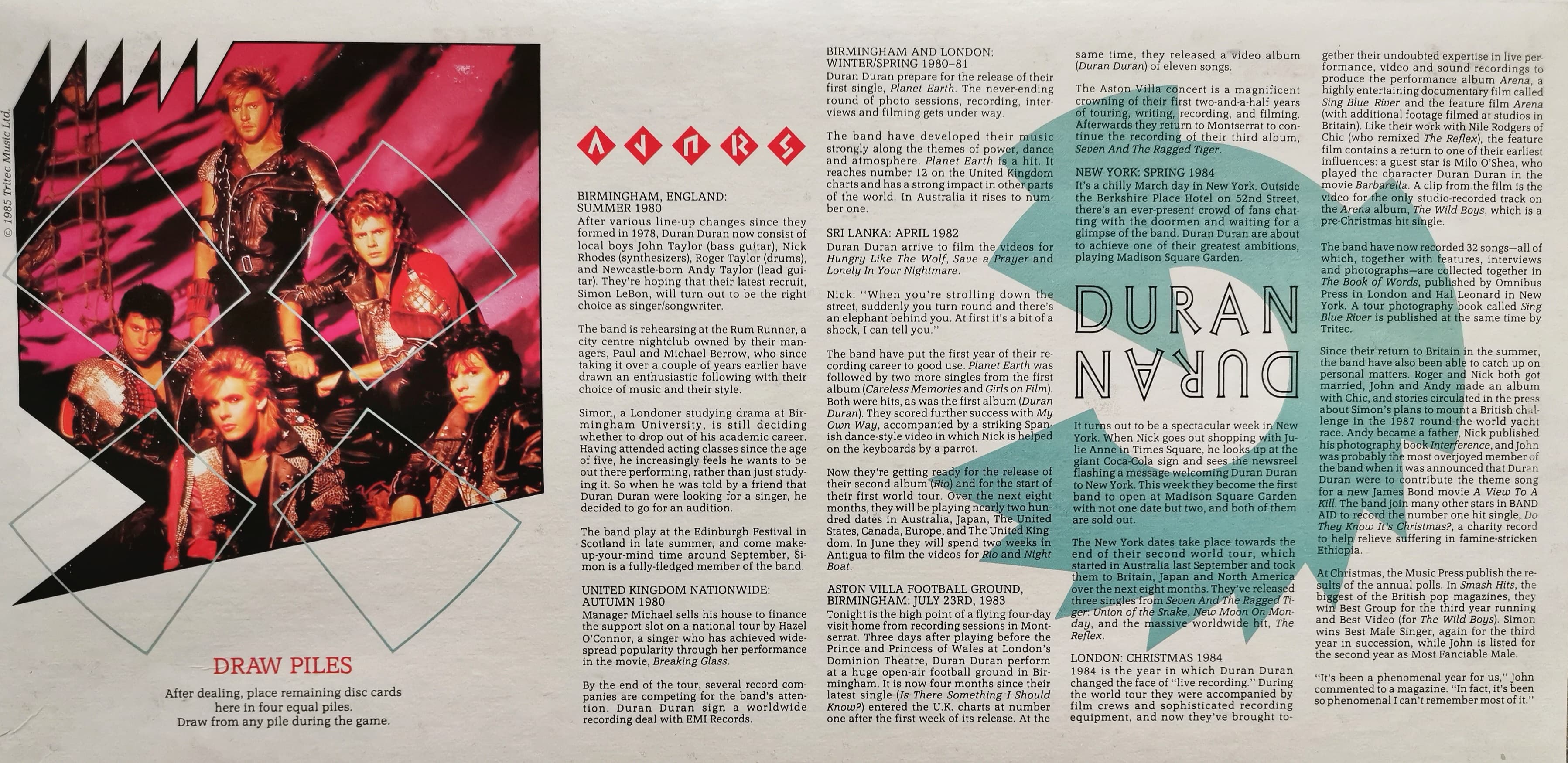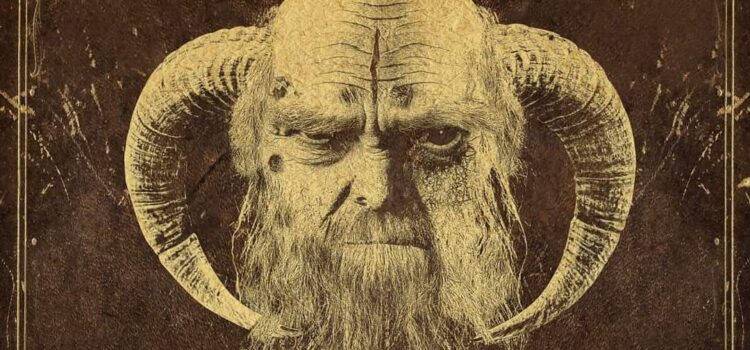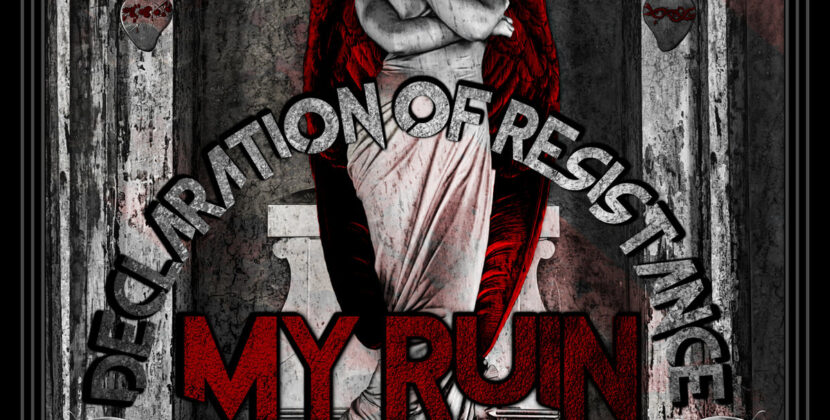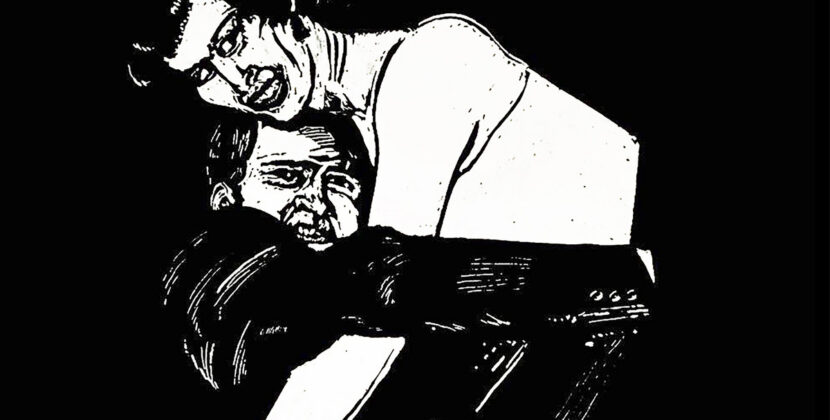
POP CULTURE SCHLOCK at RPM: Exhibit D – The Black Crowes Rock ‘n’ Roll Comic
 Greetings, RPM-people; I guess it’s time once again to dig into the Pop Culture Schlock archive and pull out something music-related to wax lyrical about. This month I’m fingering the comic book long boxes until I come across something particularly hard to handle…
Greetings, RPM-people; I guess it’s time once again to dig into the Pop Culture Schlock archive and pull out something music-related to wax lyrical about. This month I’m fingering the comic book long boxes until I come across something particularly hard to handle…
Casting a dark shadow over both my comic- and music-buying in the late Eighties and early Nineties was a virulent strain of unauthorised biographies equal parts infamous and diabolical.
Inspired by ‘Hey Boss’, an independent Bruce Springsteen parody from the mid-Eighties, Todd Loren’s Revolutionary Comics launched its Rock ‘n’ Roll Comics strand in 1989 and, quite remarkably given that it came in the path of snowballing legal threats and action, the offbeat offshoot became the indie comic book publisher’s flagship product.
 Hiring Larry Nadolsky, artist of the aforementioned Springsteen comic, to pen its debut issue, Rock ‘n’ Roll Comics hit the shelves with a first edition cover-dated June 1989. Guns N’ Roses were the subjects of this first issue and it was welcomed into the legal jungle via a cease and desist order from the GN’R lawyer, Peter Paterno. The subsequent press attention – Rolling Stone magazine covered the furore – saw the initial print run of 10,000 issues sell out completely within two weeks, with buyers assuming that the comic would soon be pulped as big business bulldozed small. As it happened, no actual lawsuits were filed and the debut GN’R issue would go on to have multiple reprints and eventually shift around 150,000 units. A first print copy resides in the Pop Culture Schlock archive, of course. Think it’s so easy to defeat legal issues when knocking on unauthorised material’s door, though? Think again…
Hiring Larry Nadolsky, artist of the aforementioned Springsteen comic, to pen its debut issue, Rock ‘n’ Roll Comics hit the shelves with a first edition cover-dated June 1989. Guns N’ Roses were the subjects of this first issue and it was welcomed into the legal jungle via a cease and desist order from the GN’R lawyer, Peter Paterno. The subsequent press attention – Rolling Stone magazine covered the furore – saw the initial print run of 10,000 issues sell out completely within two weeks, with buyers assuming that the comic would soon be pulped as big business bulldozed small. As it happened, no actual lawsuits were filed and the debut GN’R issue would go on to have multiple reprints and eventually shift around 150,000 units. A first print copy resides in the Pop Culture Schlock archive, of course. Think it’s so easy to defeat legal issues when knocking on unauthorised material’s door, though? Think again…
Rock ‘n’ Roll Comics issues 3 and 4 – featuring Bon Jovi and Mötley Crüe respectively – garnered legal challenges which forced Revolutionary Comics to found a new distribution network outside of the traditional comic book store, instead focussing on music- and gift-related retail outlets. The gamble paid off and Rock ‘n’ Roll Comics ran from 1989 to 1993, publishing 63 issues. The final issue (cover-dated November 1993 and titled ‘Sci-Fi Space Rockers’ – featuring the likes of Hawkwind, Pink Floyd, Marillion, and Genesis) was actually numbered 65 as two issues – Number 8 featuring Skid Row, and Number 61 featuring Yes – were never published due to legal problems that simply refused to have the kinks ironed out. Surprisingly, the highest profile legal case brought against Revolutionary Comics, in regards to the New Kids On The Block issue from 1990, ruled in the indie publisher’s favour, even after Todd Loren had set up a 900 number – “Nuke The New Kids!” – to raise funds for the company’s legal fees.
 So, Rock ‘n’ Roll Comics are pure, unadulterated, unofficial Pop Culture Schlock… but which issue should I feature for RPM? Scores of bands were featured: Aerosmith, Rolling Stones, Living Colour, Metallica, Anthrax, The Doors, Queen, Van Halen, The Who, Vanilla Ice – basically any popular beat combo or sex symbol that the artists couldn’t draw very well. Need proof? Check out the Bon Jovi issue; the poundshop rendering of JBJ on the cover as realistic as David Rashbaum’s hair extensions. I have, though, for the benefit of RPM’s flowery shirt and waistcoat-wearing clientele, decided upon Issue 34 of Rock ‘n’ Roll Comics, cover-dated September 1991 and devoted to…
So, Rock ‘n’ Roll Comics are pure, unadulterated, unofficial Pop Culture Schlock… but which issue should I feature for RPM? Scores of bands were featured: Aerosmith, Rolling Stones, Living Colour, Metallica, Anthrax, The Doors, Queen, Van Halen, The Who, Vanilla Ice – basically any popular beat combo or sex symbol that the artists couldn’t draw very well. Need proof? Check out the Bon Jovi issue; the poundshop rendering of JBJ on the cover as realistic as David Rashbaum’s hair extensions. I have, though, for the benefit of RPM’s flowery shirt and waistcoat-wearing clientele, decided upon Issue 34 of Rock ‘n’ Roll Comics, cover-dated September 1991 and devoted to…
The Black Crowes, by the time of the comic’s publication, had seen two of their singles – their cover of Otis Redding’s ‘Hard To Handle’, and ‘She Talks To Angels’ – crash into the Top 30 of the Billboard Hot 100, the band tread the legendary boards at Castle Donington, and be bell bottoms-deep into preparations for album number two, ‘The Southern Harmony and Musical Companion’. Being immortalized in comic book form would be the band’s then-high point, surely?
As with pretty much every page of Rock ‘n’ Roll Comics’ output, ‘Flying High With The Black Crowes’ was well-researched but dogged by poor, oft-shit artwork; exposition too often reduced to ludicrous sentences spat from inked rock star mouths – “You just wait! Any minute now you’ll hear the first single, ‘Jealous Again’, on the radio and before you know it, we’ll top the charts!” said Chris Robinson, never.
Ah, yes, Chris Robinson, one of the greatest voices of his generation, whose first word (“cool!”) in this comic comes via a thought bubble when he is still in the womb…
 This is the kind of bollocks that you have to squint your brain and accept if you’re gonna have some Rock ‘n’ Roll Comics in your collection, however. That “Unauthorised and Proud Of It!” mantra from the company emblazoned across the comic covers carte blanche to interpret a beloved history in as ludicrous a way as possible.
This is the kind of bollocks that you have to squint your brain and accept if you’re gonna have some Rock ‘n’ Roll Comics in your collection, however. That “Unauthorised and Proud Of It!” mantra from the company emblazoned across the comic covers carte blanche to interpret a beloved history in as ludicrous a way as possible.
“By the way, how’s your guitar playing coming along?” seventh grade Chris asks little brother, Rich. Pretty good you’d think, because seven pages later Mr. Crowes’ Garden have a record deal and a new band name. Soon band members are recording the sound of cars crashing into trash cans, supporting Junkyard, dissing Milli Vanilli posters, and getting career advice from Steven Tyler: “You could learn from [Aerosmith’s] mistakes, that stuff can kill you!” “Rock and Roll and safety have nothing to do with each other,” replies Chris Robinson. A few pages later he’s spitting at concert security for roughing up gig-goers. Silly Billy.
 The band is accused of dabbling in black magic, of inciting a Dutch riot. Chris slags off Milli Vanilli again; this time in the face of an autograph hunter who complains about the sound at a Crowes gig. Cutting edge stuff, I’m sure you’ll agree.
The band is accused of dabbling in black magic, of inciting a Dutch riot. Chris slags off Milli Vanilli again; this time in the face of an autograph hunter who complains about the sound at a Crowes gig. Cutting edge stuff, I’m sure you’ll agree.
“Quit calling us The New Stones!” Chris Robinson rages at a journalist. “We’re doing this in and for the ’90s,” adds Rich. “Acts like ourselves, the London Quireboys, and Lenny Kravitz are playing a NEW tune…”
…and then they are gone, forever to reside in the comic boxes of nerds like myself, a faint “the future holds nothing but high-flying promise for The Black Crowes” inked farewell floating on the winds of time.
If you think that the bands featured in Rock ‘n’ Roll Comics got their bank balances bludgeoned by the unofficial output of Revolutionary Comics, spare a thought for the company’s main man, Todd Loren. He was brutally murdered in 1992, the body of the 32-year-old found at his San Diego condo. He had been stabbed to death and, I shit you not, members of both Guns N’ Roses and New Kids On The Block were linked with the murder due to the previous legal issues. The case remains unsolved to this day, though many believe Loren was the first victim of Andrew Cunanan; the American serial killer who murdered Italian fashion designer, Gianni Versace.
You didn’t expect that bleak shit when I was writing about Milli Vanilli a few paragraphs ago, right?!
I’ll be back in October with some horror-related musical Schlock just in time for All Hallow’s Eve. Smell ya later…
Follow Gaz & his Pop Culture Schlock 365 on Facebook Here
 I love Duran Duran. Can’t help it. I’m sure the band is a guilty pleasure for many a rock fan: John Taylor’s bass playing, Andy Taylor’s guitar, etc. – but guilty you should not feel when you feel the love for Duran Duran. Three things jump out of my memory banks when I think back to how DD infiltrated my rock leanings: the charity gig the band played at Villa Park, the home of football, in 1983 that even saw them feature prominently on the cover and centrespread of an Aston Villa match programme; the music video for ‘The Wild Boys’ debuting on the BBC on Hallowe’en night in 1984 as they tried to compete with MTV; the sounds of ‘Arena’, the album from which that classic single came, pumping out of my sister’s bedroom… on cassette. This column, of course, is dedicated to pop culture collectables and, though a tsunami of wholly unofficial merchandise swirled around the band’s success – annuals, postermags, badges, photo patches, those particularly classy screen-printed silk scarves – actual official items were in shockingly short supply. Topps, famed trading card producers, released a 33-card Duran Duran card line in 1985 complete with stickers and stick of gum (I have a sealed pack in my collection, 35-year-old bubblegum forever calling to me, siren-like, in a quest to snap my teeth at the friggin’ roots), but it would take The Milton Bradley Company, the American board game manufacturer founded in 1860, to be brave/cool enough to dip a tucker-booted toe into the depths of the band’s chart success to produce the ultimate official piece of Duran Duran merchandise.
I love Duran Duran. Can’t help it. I’m sure the band is a guilty pleasure for many a rock fan: John Taylor’s bass playing, Andy Taylor’s guitar, etc. – but guilty you should not feel when you feel the love for Duran Duran. Three things jump out of my memory banks when I think back to how DD infiltrated my rock leanings: the charity gig the band played at Villa Park, the home of football, in 1983 that even saw them feature prominently on the cover and centrespread of an Aston Villa match programme; the music video for ‘The Wild Boys’ debuting on the BBC on Hallowe’en night in 1984 as they tried to compete with MTV; the sounds of ‘Arena’, the album from which that classic single came, pumping out of my sister’s bedroom… on cassette. This column, of course, is dedicated to pop culture collectables and, though a tsunami of wholly unofficial merchandise swirled around the band’s success – annuals, postermags, badges, photo patches, those particularly classy screen-printed silk scarves – actual official items were in shockingly short supply. Topps, famed trading card producers, released a 33-card Duran Duran card line in 1985 complete with stickers and stick of gum (I have a sealed pack in my collection, 35-year-old bubblegum forever calling to me, siren-like, in a quest to snap my teeth at the friggin’ roots), but it would take The Milton Bradley Company, the American board game manufacturer founded in 1860, to be brave/cool enough to dip a tucker-booted toe into the depths of the band’s chart success to produce the ultimate official piece of Duran Duran merchandise.





























Recent Comments